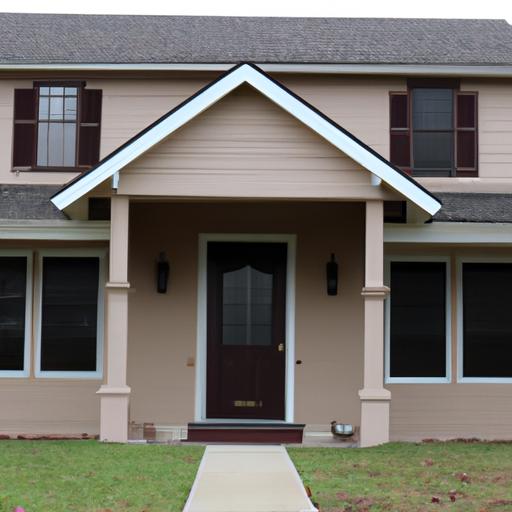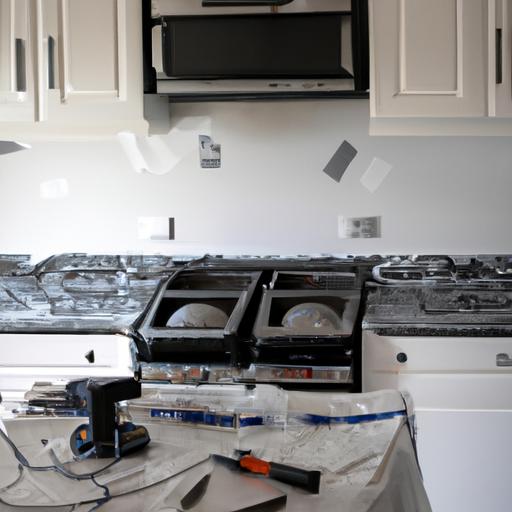Rates for Home Improvement Loans: Finding Your Best Deal
Introduction
When it comes to embarking on home improvement projects, the importance of securing the best rates for home improvement loans cannot be overstated. But first, let’s delve into what exactly home improvement loans entail. These loans are specifically designed to provide financial assistance for renovations, repairs, or upgrades to your home. Whether you’re looking to spruce up your living space, fix a leaky roof, or create the kitchen of your dreams, home improvement loans can be a valuable tool in making your vision a reality.
Now, let’s talk about the crux of the matter – finding the best rates for these loans. The interest rates you secure on your home improvement loan can have a significant impact on the overall cost of your project. By understanding how to navigate the terrain of interest rates, loan terms, and lender offerings, you can ensure that you’re getting the best deal possible. In this article, we’ll explore the factors that influence home improvement loan rates and provide you with tips on how to secure the most favorable rates for your project. Let’s dive in!
Factors that Impact Home Improvement Loan Rates
Credit Score
Your credit score plays a pivotal role in determining the interest rate you’ll be offered on a home improvement loan. Lenders use your credit score as a measure of your creditworthiness, with higher scores typically resulting in lower interest rates. Before applying for a loan, it’s essential to check your credit score and take steps to improve it if necessary.
Loan Amount
The amount you borrow for your home improvement project can also influence the interest rate you’re offered. Generally, larger loan amounts may come with higher interest rates, as lenders perceive them as higher-risk loans. It’s crucial to borrow only what you need to avoid paying unnecessary interest charges.
Loan Term
The length of your loan term can impact the interest rate you’re quoted. Shorter loan terms typically come with lower interest rates but higher monthly payments, while longer terms may have higher rates but lower monthly payments. Consider your budget and financial goals when choosing a loan term that works best for you.
Type of Loan
The type of home improvement loan you choose can also affect the interest rate you receive. Secured loans, such as home equity loans or lines of credit, may offer lower rates than unsecured personal loans. Understanding the differences between loan types can help you make an informed decision.
Lender’s Policies
Each lender has its own set of policies and criteria for determining interest rates on home improvement loans. Factors such as the lender’s risk assessment, market conditions, and loan product offerings can all impact the rates they offer. It’s essential to shop around and compare rates from multiple lenders to find the best deal for your specific financial situation.
How to Compare Rates for Home Improvement Loans
Researching Different Lenders
When it comes to finding the best rates for your home improvement loan, the first step is to research different lenders. Take the time to compare interest rates, loan terms, and fees from various financial institutions. By casting a wide net in your search, you can ensure that you’re getting the most competitive rates available in the market.
Getting Quotes from Multiple Lenders
Don’t settle for the first offer that comes your way. Instead, gather quotes from multiple lenders to compare rates and terms. This will give you a comprehensive view of what’s out there and allow you to make an informed decision based on your financial needs and goals.
Understanding APR vs. Interest Rates
When comparing loan offers, it’s essential to understand the difference between APR (Annual Percentage Rate) and interest rates. While the interest rate represents the cost of borrowing money, the APR includes additional fees and charges associated with the loan. By comparing APRs, you can get a clearer picture of the total cost of the loan and make a more accurate comparison between different offers.
Reading the Fine Print
Before committing to a loan, make sure to read the fine print carefully. Pay attention to any hidden fees, prepayment penalties, or other terms that could impact the overall cost of the loan. Understanding the details of the loan agreement will help you avoid any surprises down the road and ensure that you’re getting the best deal possible.
Considering Additional Fees
In addition to interest rates, be sure to consider any additional fees that may be associated with the loan. This could include origination fees, closing costs, or ongoing maintenance fees. Factoring in these extra costs will give you a more accurate picture of the total cost of borrowing and help you choose the most cost-effective option for your home improvement project.
Tips for Getting the Best Rates on Home Improvement Loans
Improve Your Credit Score
One of the most crucial factors that lenders consider when determining your loan rate is your credit score. A higher credit score typically translates to lower interest rates. To improve your credit score, focus on paying bills on time, reducing debt, and checking your credit report for any errors that may be affecting your score.
Shop Around for the Best Offers
Don’t settle for the first loan offer that comes your way. Take the time to compare rates and terms from different lenders to ensure you’re getting the best deal. Online comparison tools can be a helpful resource in this process, allowing you to easily see multiple offers side by side.
Consider Different Loan Terms
The length of your loan term can impact the interest rate you receive. Shorter loan terms often come with lower interest rates but higher monthly payments, while longer terms may have higher rates but lower monthly payments. Consider your financial goals and budget when deciding on the loan term that works best for you.
Use Collateral If Possible
If you have valuable assets such as a home or vehicle, using them as collateral can help you secure a lower interest rate on your home improvement loan. Collateral provides lenders with added security, reducing their risk and potentially lowering your interest rate in return.
Negotiate with Lenders
Don’t be afraid to negotiate with lenders to try and secure a better rate. If you have a strong credit history or a solid relationship with a financial institution, you may be able to leverage this to negotiate a lower interest rate on your home improvement loan. Be prepared to shop around and advocate for yourself to get the best deal possible.
Common Mistakes to Avoid When Applying for Home Improvement Loans
Not Checking Your Credit Score Beforehand
Before applying for a home improvement loan, it’s crucial to know where you stand financially. Your credit score plays a significant role in determining the interest rate you’ll receive. By checking your credit score beforehand, you can address any issues that may negatively impact your loan application and take steps to improve your score if necessary.
Applying for Multiple Loans at Once
While it may be tempting to apply for multiple home improvement loans to increase your chances of approval, this can actually harm your credit score. Each loan application results in a hard inquiry on your credit report, which can lower your score. Instead, focus on researching lenders and choosing the best offer that suits your needs.
Ignoring the Impact of Loan Terms on Overall Costs
When selecting a home improvement loan, don’t just focus on the interest rate. Consider the loan term as well, as this can significantly impact the total cost of your project. A longer loan term may result in lower monthly payments but higher overall costs due to accruing interest. Evaluate the loan terms carefully to ensure you’re making a financially sound decision.
Overlooking Additional Fees and Charges
Before signing on the dotted line, be sure to read the fine print and understand all the fees associated with the loan. Some lenders may charge origination fees, prepayment penalties, or other hidden costs that can add up over time. By being aware of these fees upfront, you can avoid any surprises down the road.
Failing to Compare Offers from Different Lenders
One of the biggest mistakes you can make when applying for a home improvement loan is not shopping around for the best deal. Different lenders offer varying interest rates, terms, and fees, so it’s essential to compare offers from multiple sources. By taking the time to explore your options, you can secure the most favorable loan terms for your project.
Conclusion
In conclusion, securing the best rates for home improvement loans is a crucial step in ensuring the success of your renovation project. By understanding the factors that influence loan rates, comparing offers from different lenders, and following our tips for securing the best deals, you can set yourself up for financial success. Remember, improving your credit score, shopping around for the best offers, and negotiating with lenders can make a significant difference in the overall cost of your project.
When it comes to home improvements, every penny saved on loan rates can be put towards enhancing your living space and increasing the value of your property. So, take the time to research, compare, and negotiate to find the best rates for your home improvement loan. Your dream home is within reach – all it takes is finding the right loan at the right rate. Good luck on your home improvement journey!



